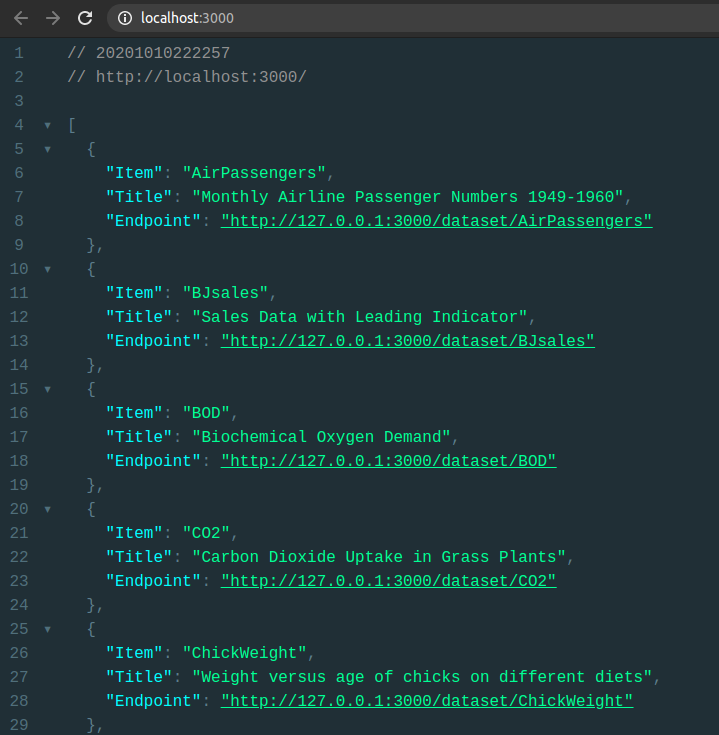API
One is not limited to sending HTML responses and can thus build APIs with ambiorix.
Below we build a small API that has two endpoints:
- One that lists all the datasets in the base R
datasetspackage - An endpoint to retrieve the datasets
library(ambiorix)
PORT <- 3000L
app <- Ambiorix$new(port = PORT)
app$get("/", \(req, res){
# get list of datasets
datasets <- as.data.frame(data(package = "datasets")$results)
datasets <- subset(datasets, !grepl("[[:space:]]", datasets$Item))
# add links
datasets$Endpoint <- sprintf(
"http://127.0.0.1:%s/dataset/%s", PORT, datasets$Item
)
datasets$Endpoint <- sapply(datasets$Endpoint, URLencode)
res$json(datasets[, c("Item", "Title", "Endpoint")])
})
app$get("/dataset/:set", \(req, res){
res$json(
get(req$params$set)
)
})
app$start()
Note that you can change the serialiser with the serialiser method: pass it a function that accepts the data and the three-dot construct (...), it should return the JSON.
app$serialiser(\(data, ...){
jsonify::to_json(data, ...)
})